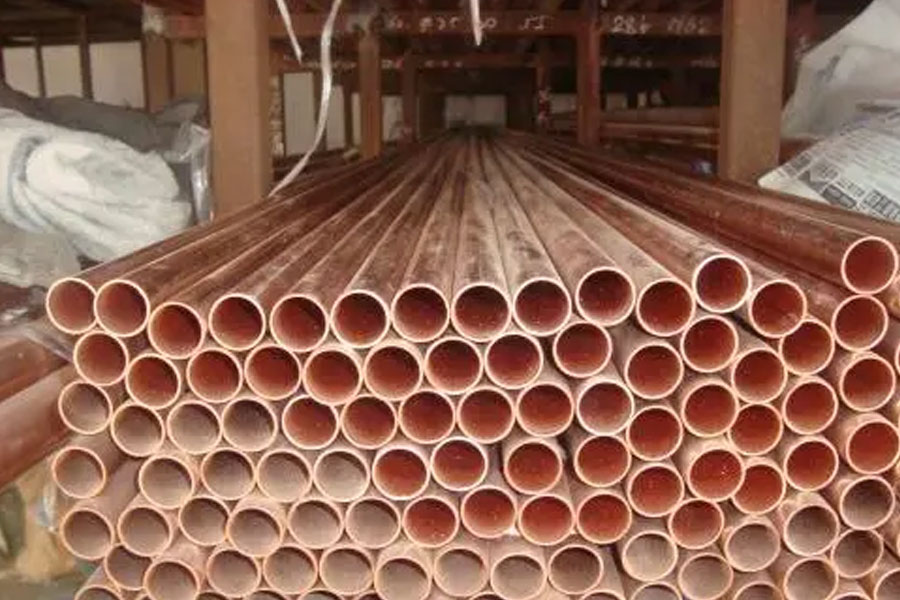Although China has few copper reserves , China is still the world’s second largest copper producer by now. Peru jump from the third copper producer in the world to the second. After Las Bambas was put into production, the annual production capacity is about 450,000 tons (metal amount). It should be the fifth largest copper mine in the world. It is also the first time that a Chinese-controlled copper mine is in the forefront of the world.
01 Distribution of copper resources
The content of copper in the earth’s crust is about 0.01%. In some copper deposits, the copper content can reach 3% to 5%. Copper in nature exists mostly as a compound, namely copper minerals. In 2014, the U.S. Geological Survey conducted an assessment of global copper deposits and found that the copper content of the proven copper resources was about 2.1 billion tons, and the resources to be explored are expected to contain 3.5 billion tons of copper.
According to 2015 data from the U.S. Bureau of Resources Survey, global copper reserves total about 700 million tons. Including: Chile 209 million tons, Australia 93 million tons, Peru 68 million tons, the United States 35 million tons, Mexico 38 million tons, China 30 million tons, Russia 30 million tons, Indonesia 25 million tons, Poland 26 million tons, Zambia 0.2 100 million tons, Congo (Kinshasa) 20 million tons, Canada 11 million tons, Kazakhstan 106 million tons, and other countries 90 million tons.
World copper resources are distributed by region and country:
Regional distribution: mainly distributed in North America, Latin America and Central Africa.
Country distribution: The world’s copper resources are mainly concentrated in Chile, the United States, Zambia, Russia and Peru. Among them, Chile is the country with the richest copper resources in the world, and its copper metal reserves account for about 29.86% of the world’s total reserves. At the same time, Chile is the world’s largest copper producer and exporter.
Distribution of copper resources in China
According to the “2014 China Land and Resources Bulletin” issued by the Ministry of Land and Resources, as of 2014, China’s copper mines have identified reserves of 955.38 million tons of copper.
China’s copper production areas are concentrated in: East China, where copper production accounts for 51.84% of the country’s total output, of which Anhui and Jiangxi provinces account for about 30%. Yunnan and Inner Mongolia are also the main copper mines in China.
02 Global copper production
According to the Peruvian Business Daily, international consulting company CRU Consulting released a report that in 2013 Peru was still the world’s third largest copper producer, with the top two being Chile and China. According to the report, Chile ’s copper output was 5.788 million tons in 2013, China was 1.596 million tons, and Peru was 1.353 million tons. The United States ranks fourth, with output of 1.273 million tons, followed by Australia, Congo, Zambia, Russia, Canada and Indonesia.
Major copper producing countries: Chile, Australia, Peru, USA, Mexico, China, Russia, Indonesia, Congo, Zambia, etc.
Major copper consumers: the United States, Japan, Germany, Russia, China, France, Italy, Belgium, South Korea, and the United Kingdom.
Major copper exporters: Chile, Canada, Peru, Mexico.
Major copper importing countries: the United States, Japan, France, the United Kingdom, Italy, Belgium, China.
China’s copper concentrate output increased by 7.6% year-on-year in 2014
The latest data released by the National Bureau of Statistics shows that China produced 1,935,466 tons of copper concentrate in 2014, a year-on-year increase of 7.6%. In 2014, China’s crude refining and refining capacity continued to expand, and its demand for copper ore remained strong.
According to the National Bureau of Statistics, China produced about 7.96 million tons of electrolytic copper in 2014, up 13.8% year-on-year. Domestic smelters actively produce electrolytic copper, and demand for copper concentrates is relatively strong. Therefore, domestic mine production is highly enthusiastic. In addition, new mines, including Huludao Hongda Molybdenum, were put into production in 2014 and some mines that were put into operation in 2013 have gradually released their production capacity in 2014, and their output has increased.
Therefore, China’s copper concentrate output continued to increase in 2014. However, the shortage of domestic resources determines that the copper industry’s external dependence is still high. Throughout the past few years, the domestic copper concentrate output has generally shown an upward trend, but due to factors such as the decline in copper ore grades and lower copper prices, output growth has been relatively slow.
03 China’s copper concentrate imports
China is the world’s largest copper consumer, and its copper reserves and basic reserves account for only 5.53% and 6.67% of the world’s total, respectively. The demand for copper concentrates can only be met by importing large quantities. From 2003 to 2014, China’s copper concentrate imports increased from 2.667 million tons to 11.82 million tons.
